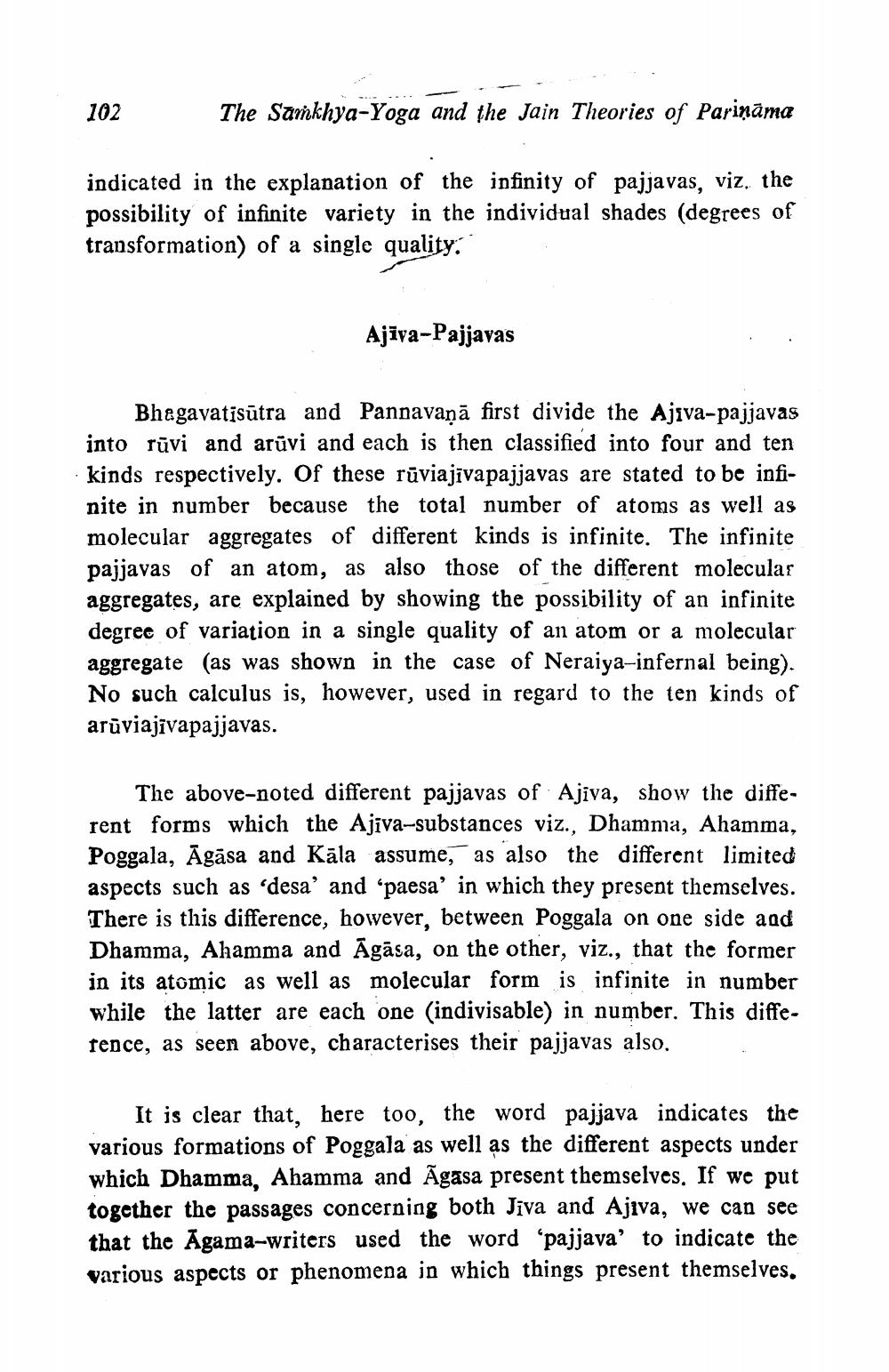________________
102
The Samkhya-Yoga and the Jain Theories of Pariņāma
indicated in the explanation of the infinity of pajjavas, viz. the possibility of infinite variety in the individual shades (degrees of transformation) of a single quality:
Ajīva-Pajjavas
Bhagavatīsūtra and Pannavaņā first divide the Ajiva-pajjavas into rūvi and arūvi and each is then classified into four and ten kinds respectively. Of these rūviajivapajjavas are stated to be infinite in number because the total number of atoms as well as molecular aggregates of different kinds is infinite. The infinite pajjavas of an atom, as also those of the different molecular aggregates, are explained by showing the possibility of an infinite degree of variation in a single quality of an atom or a molecular aggregate (as was shown in the case of Neraiya-infernal being). No such calculus is, however, used in regard to the ten kinds of arūviajīvapajjavas.
The above-noted different pajjavas of Ajiva, show the different forms which the Ajiva-substances viz., Dhamma, Ahamma, Poggala, Āgāsa and Kāla assume, as also the different limited aspects such as 'desa' and 'paesa' in which they present themselves. There is this difference, however, between Poggala on one side and Dhamma, Ahamma and Āgāsa, on the other, viz., that the former in its atomic as well as molecular form is infinite in number while the latter are each one (indivisable) in number. This difference, as seen above, characterises their pajjavas also.
It is clear that, here too, the word pajjava indicates the various formations of Poggala as well as the different aspects under which Dhamma, Ahamma and Agasa present themselves. If we put together the passages concerning both Jiva and Ajiva, we can see that the Āgama-writers used the word 'pajjava' to indicate the various aspects or phenomena in which things present themselves.




